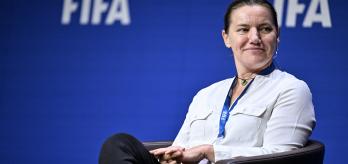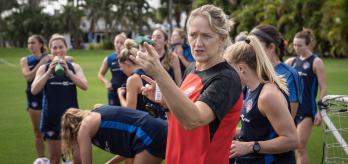00:08
Key trends from the 2023 World Cup
Ellis identifies a number of major trends to emerge from the 2023 FIFA Women’s World Cup™. Perhaps the most striking was that teams were far more compact and organised, particularly in defence, which made it harder to score goals than in previous tournaments. This was also the most competitive Women’s World Cup so far, despite the expansion from 24 to 32 teams. Ellis sees this as further evidence that women’s football is increasingly global, and that national associations prepared to invest in the women’s game can achieve tangible results very quickly.
02:37
A more sophisticated approach
Teams showed far more tactical flexibility at this World Cup than in previous tournaments, especially in the mid-block and the defensive press. Ellis pinpoints the continued growth of the game as the main driver of this evolution; as more players get more playing time in more countries, they become more sophisticated in their approach, and that is reflected in their national teams. For instance, top teams can now be expected to have multiple strategies for defence and attack, and to be able to switch between them during matches.
05:48
More flexibility for coaches
Players are not the only ones being exposed to new ideas. Coaches are making the most of the technical ability at their disposal to plan and execute ever more complex gameplans. The decision to allow five substitutes at this World Cup accelerated this change, because it gave managers more scope to change the course of matches by changing their formations and tactics. The new rules also had the positive side-effect of allowing more players to gain experience of World Cup football, which will benefit the game as a whole.
06:41
Women’s football forging its own path
Finally, Ellis considers how the women’s game might develop over the next five years. She is keen to stress that women’s football is now following its own distinct development pathway, as opposed to emulating the same trends seen in the men’s game. There are increasing numbers of experts specialising specifically in women’s football, leading to improvements in fitness and technical ability. This development is in turn encouraging tactical innovation, as teams look for ways to out-manoeuvre their increasingly capable opposition.















